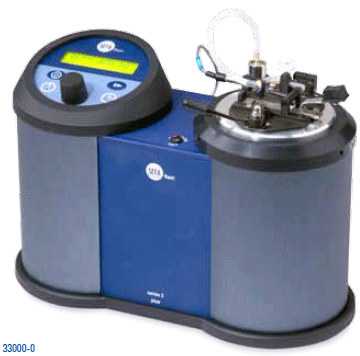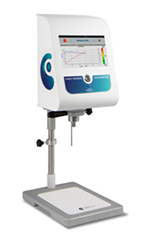The flash point of a fuel is the lowest temperature at which vapors are formed in such an amount that in the presence of oxygen (air) and a primer give rise to the phenomenon of combustion.
There are different types of instruments able to perform this test, according to the international standard methods, which must be chosen according to the type of samples to be analyzed and the temperature range.
SETAFLASH 30000-0
In accordance with the following regulations:
ASTM D1655, ASTM D3278, ASTM D3828, ASTM E502, BS 3900 Part A13, BS 6664 Parts 3 & 4, BS EN 456, CHIPS Regulations, DEF STAN 91-91, EPA 1020 A & B, IP 303 (obs), IP 523, IP 524, ISO 3679, ISO 3680, UN Class 3 Non-viscous Flammable Liquids
Fast analysis times, it takes 1 minute for tests up to 100 C, and 2 minutes up to 300 C (with the traditional method it can also take 45/50 minutes, depending on the temperature to be reached.
Only 2 ml for tests up to 100 C and 4 ml up to 300 C,
Temperature range: from ambient to + 300 ° C
Flash point verification is important during product inspection and analysis, for example in the classification of potential hazardous substances, where storage, transportation and price are based on flammability, an incorrect classification can lead to significant additional costs. Setaflash will quickly determine flash point changes, which will indicate that the sample has been contaminated.
The SETAFLASH SERIES 3 incorporates automatic detection flashes and easy-to-operate controls designed to minimize operator skill and ensure reliable results. A precise and repetitive “Flash / No Flash” result is read on a digital display in less than two minutes, reducing waiting periods and allowing evaluation tests in the shortest possible time.
It should also be noted that SETAFLASH is a dedicated tool for the classification directives of dangerous products 91/689 / EC (H3-A HIGHLY FLAMMABLE, under 21 EC H3-B FLAMMABLE, for flash points higher than 21 C, but less than 55 CI methods used for classification also refer to other Directives: 67/548 / EEC and the most recent 92/69 / EEC, including ISO 3679 and 3680.

SETAFLASH 33250-2 ” ACTIVE COOL ” CON COPPA ANTICORROSIVA
Setaflash 3 “Active Cool” has been specifically developed to perform rapid Flash / No flash (Go / No go) tests on liquid and semi solid products, in a temperature range of + 10 ° C to + 130 ° C .
According to the following methods:
ASTM D3278, ASTM D3828, ASTM D7236, ASTM E502, BS 3900 Part A13, BS 6664 Parts 3 & 4, BS EN 456, CHIPS Regulations, Classification of Dangerous Goods for Carriage: Viscous and Non-viscous Liquids, EPA 1020 A & B , IP 303 (obs) Parts 1 & 2, IP 523, IP 524, IP 534, ISO 3679, ISO 3680, UN Class 3 Non-viscous Flammable Liquids.
Features:
– Anti-corrosive cup; – Flash / No Flash (Thermal Balance) & Ramp modes (2 ° C / Min); – Temperature range from + 10 ° C to + 130 * C; – Determination of the flash point in less than 2 minutes; – Minimum sample quantity (2 or 4ml); – Automatic flash point detection; – Cooling through Peltier Cells; – Acoustic and visual warnings; – Portable; – Display ° C or ° F; – Automatic barometric correction.
When used in Ramp Mode, the sample temperature increases by 2 ° C per minute. An acoustic signal warns when to do the test, every 1 ° C up to 100 ° C and every 2 ° C above 100 ° C until the flash point has been detected (max 130 ° C), according to the determination rapid flash point according to ASTM D7236 and IP534.
The anticorrosive sample cup is heated and cooled by the Peltier Cells. This gives an accuracy and stability of the test temperature and rapidly reestablishes the temperature between one test and another.
The Peltier Cells also allow testing at temperatures below the ambient temperature
SETAFLASH is a dedicated tool for and classification of hazardous products 91/689 / EC (H3-A HIGHLY FLAMMABLE, under 21 EC H3-B FLAMMABLE, for flash points greater than 21 C, but less than 55 CI methods used for classification they also refer to other Directives: 67/548 / EEC and the most recent 92/69 / EEC, including ISO 3679 and 3680.



